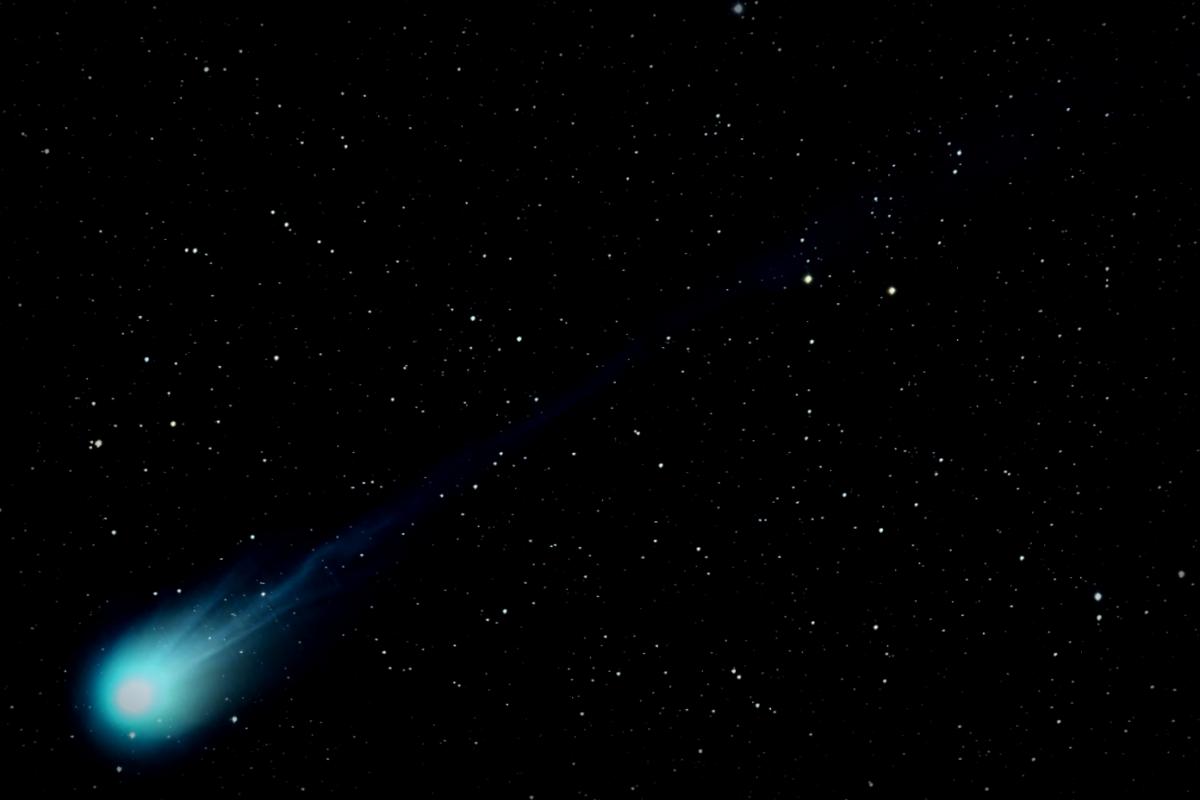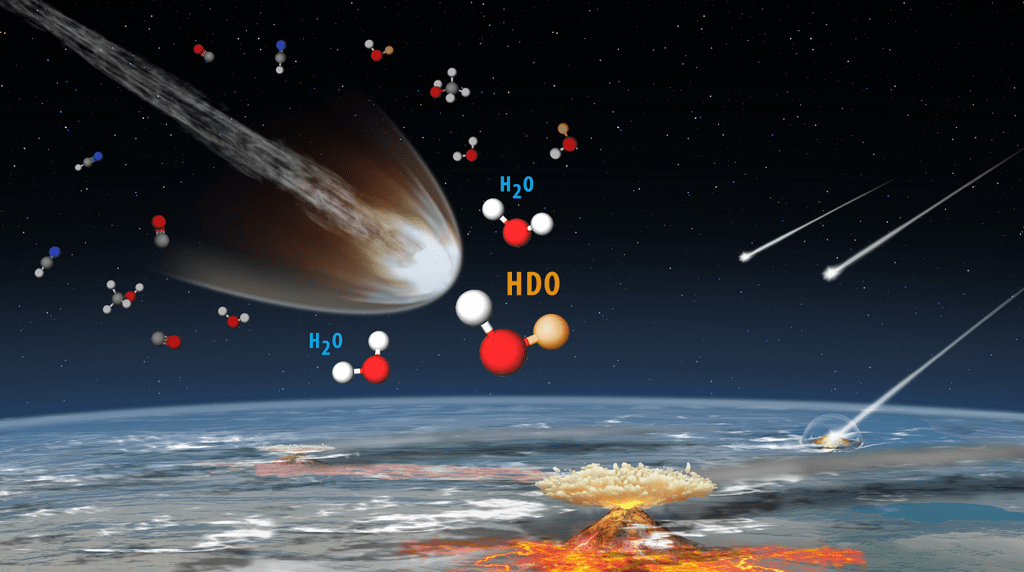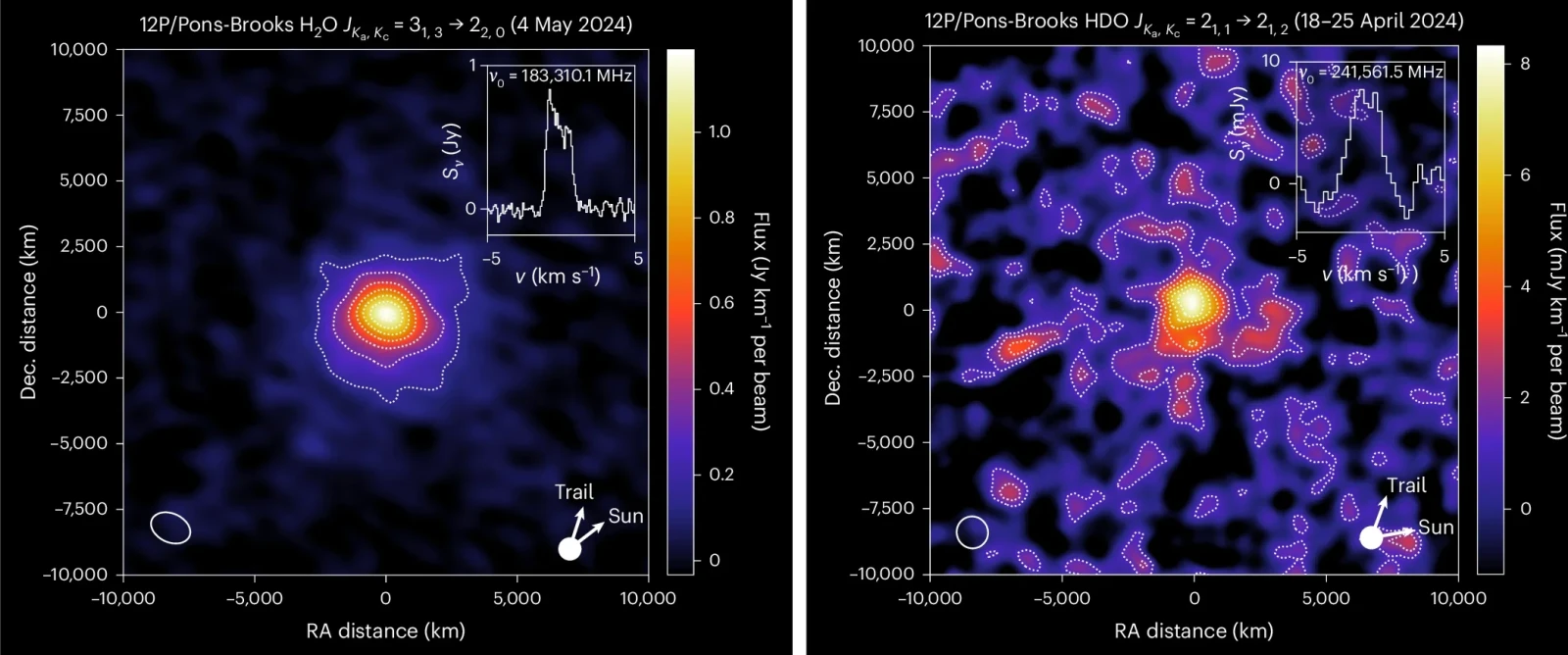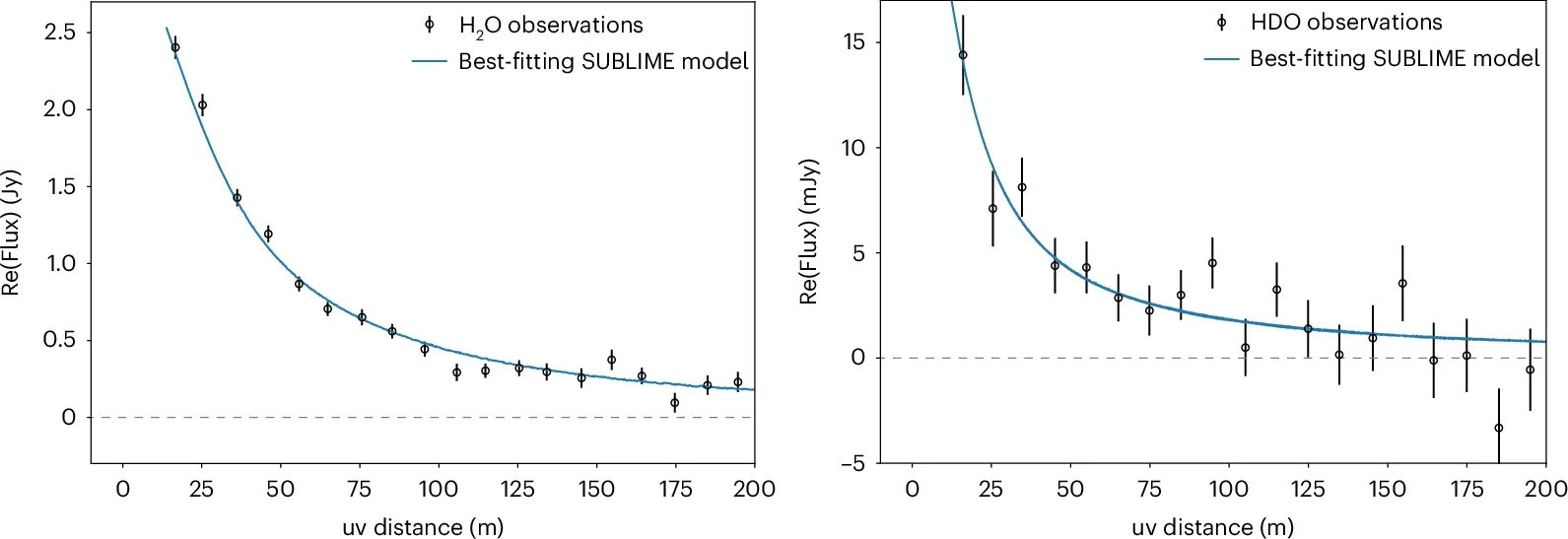The origin of Earth’s oceans has been a longstanding mystery. Once thought to be relatively dry, our planet has transformed into a world dominated by water. Recent studies, powered by high-tech radio telescopes, are shedding light on how this transition occurred, with evidence pointing toward comets as key water bearers in the early history of our planet.
Comets: Nature’s Frozen Time Capsules
Comets are often viewed as the remnants from the formation of the Solar System, dating back about 4.5 billion years. These icy visitors preserve materials from the cosmos that didn’t merge into planets, acting as natural time capsules. As they approach the Sun, the gases trapped in them thaw out, releasing a shimmering cloud known as a coma. By analyzing this gas, astronomers gain valuable insights into both the comets and the early Solar System conditions.
Recent advancements have emerged from the study of comet 12P/Pons–Brooks, known as a Halley-type comet with an orbit around the Sun that lasts about 71 years. Utilizing the Atacama Large Millimeter/submillimeter Array (ALMA) in Chile, researchers developed thorough maps showcasing both regular water (H₂O) and its heavier variant (HDO, which carries the deuterium isotope) present in the comet’s coma. A comparison of these substances revealed a remarkably similar deuterium-to-hydrogen ratio—d the D/H ratio—to that found in Earth’s oceans.
The Importance of the D/H Ratio
This D/H ratio serves as a unique isotopic fingerprint for water that formed in different regions of the Solar System, responding to varying local temperatures and chemical compositions. A higher level of deuterium usually signifies ice originating from colder, isolated areas, while lower deuterium suggests a warmer environment closer to the Sun.
The ratio the ALMA team recorded in 12P/Pons–Brooks was an extraordinary 1.7 × 10⁻⁴, almost paralleling that of our ocean’s water. Martin Cordiner from NASA’s Goddard Space Flight Center, who was at the forefront of this study, noted the immense significance of this result, stating: “Comets like this carry echoes from the birth of our Solar System. The evidence we gathered is the strongest yet supporting that some Halley-type comets transported water comparable in isotopic composition to that found in Earth’s oceans.”
Furthermore, this discovery marks the lowest D/H ratio observed in a comet of this kind, bolstering the hypothesis that these icy bodies could have been essential sources of water during Earth’s early days.
Further Clues from Space
However, comet 12P isn’t alone in pointing toward this revelation. Astronomers have also found water vapor in 29P/Schwassmann-Wachmann 1, a distinctive comet orbiting between Jupiter and Neptune. This comet stands out because water vapor was identified at a significant distance from the Sun, an area cold enough typically to prevent ice from sublimating. This finding hints that some comets might contain highly volatile materials capable of releasing gases even in the cold, outer stretches of space.
Altogether, these findings suggest that Earth’s water may have originated from multiple comet types—both those from the Kuiper Belt past Neptune and others from the more remote Oort Cloud. Each discovery provides additional pieces to the jigsaw puzzle that narrates the complex story of our oceans.
Unveiling the Past
Debates around whether asteroids or comets supplied the water for Earth have wrinkled scientists’ thoughts for decades. Past water compositions from comets often displayed significantly different D/H ratios compared to ocean water, casting doubts on the comet theory. However, as technological advancements take place, researchers are discovering comet specimens that provide ratios aligning much closer to our oceans.
According to Stefanie Milam, another co-author of the 12P research, mapping both H₂O and HDO directly in the comet’s coma was crucial. She mentioned, “By analyzing both types of water directly from the coma, we can determine if these gases originate from the frozen ices within the comet’s solid block or if they arise through chemistry interactions in the gas.”
This thoroughness is vital. If the water exists in its primordial state, locked away since the advent of our Solar System, it would inevitably connect us to the cosmic past.
Examining Beyond Our Planet
Discovering how Earth obtained its water could offer insights into other solar systems as well. If comets efficiently transport water, then it’s possible exoplanets revolving around distant stars might experience comparable “water deliveries,” thereby amplifying the likelihood of finding habitable environments elsewhere.
Every added observation of comets refines our understanding of the water distribution throughout the Solar System. With the evolution of telescopic technology, experts anticipate detecting water vapor in more distant and subtle comets. These revelations don’t only clarify Earth’s azure appearance but also serve as guiding stars in the quest for extraterrestrial life.
What This Research Uncovers
These insights significantly change our perspective about Earth’s early days. If comets similar to 12P/Pons–Brooks harbored water identical to that of our oceans, then impacts from these celestial bodies may have been instrumental in creating the conditions for life. The findings lend credence to the thought that vital life components might have traveled thousands of miles from space, delivered by glacial messengers.
This new knowledge isn’t just a revelation about the sources of our water; it transforms the search for life by illuminating potential locations holding water-rich worlds across the universe.
Future missions designed to study comets could unveil even bigger secrets about how life on Earth—and perhaps on other planets—initiated its cosmic journey.
The research findings are documented online in the journal Nature Astronomy.























